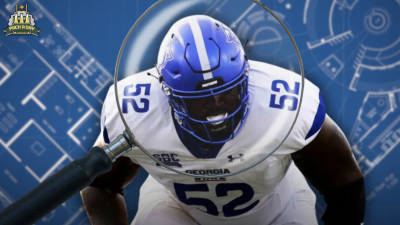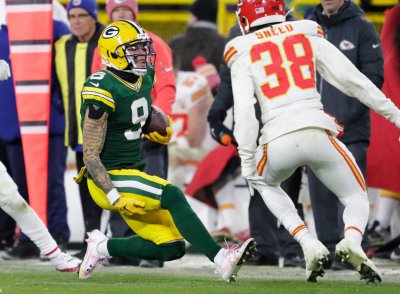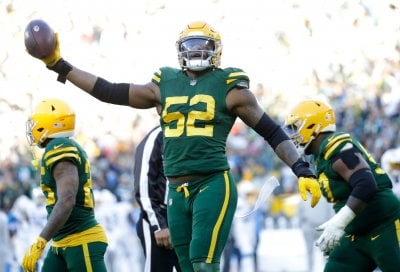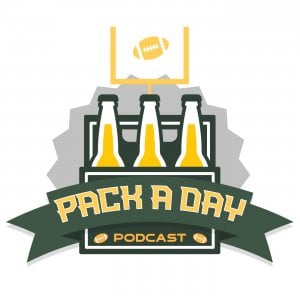Best & Worst Case Scenarios: 2013 Packers Safeties
In our best-case scenario, Morgan Burnett grabs at least five interceptions in 2013 and is named to the first Pro Bowl of his career.
It's time for the seventh annual "Best & Worst Case Scenario" series, a feature that goes back to the days of the old RailbirdCentral.com domain.
I attempt to take a look at what is the very best possible season a player is capable of producing, and on the other hand, what would happen if a player fell flat on his face (without assuming they suffer a season-ending injury). These are intended to be extreme scenarios on both sides of the spectrum. More than likely, each player is going to fall somewhere in the middle, but every now and then, they just so happen to come to fruition.
As one final note, I also try to take a look at what these scenarios would be from an individual standpoint and not necessarily what's best (or worst) for the team.
Morgan Burnett
Best-case scenario: Like LeRoy Butler, Darren Sharper and Nick Collins before him, Burnett explodes onto the scene in his fourth year in the NFL. Now that he received a lucrative contract extension, he can focus on football and has a sparkling 2013 season. For the first time as a professional, Burnett becomes a ballhawk with at least five interceptions and another two forced fumbles. He remains a physical presence and makes more than 100 tackles for his third consecutive season. Burnett is named to his first ever Pro Bowl.
Worst-case scenario: It's another solid but unspectacular season for Burnett. The most disappointing thing is that he fails to live up to his interception-grabbing reputation from college. For a third consecutive year, he only grabs two or three INTs. Burnett makes 100 tackles, but it seems as if he's cleaning up the mistakes of the cornerbacks and the safety next to him.
Jerron McMillian
Best-case scenario: McMillian is everything the Packers had hoped for and more. With Charles Woodson departing in the offseason, they needed someone to emerge at safety opposite Burnett, and McMillian holds down the fort. Just like his rookie year, he was always a physical presence, never afraid to throw his body around. But McMillian also makes his biggest strides in pass coverage, helping to shut down opposing tight ends and grabbing at least four interceptions in the process.
Worst-case scenario: McMillian is full of potential, but he has yet to put together a complete game. He loses out on the starting job to M.D. Jennings, although he's the top backup at either safety position if Jennings or Burnett were to go down. Regardless, he plays in specialized subpackages on the Packers defense, including the dime formation. McMillian makes about the same impact he did as a rookie, but he doesn't live up to the higher expectations.
M.D. Jennings
Best-case scenario: Through solid, consistent play and a knowledge of the Packers defense, Jennings wins the starting job at safety over McMillian. His best quality is his fluidity in coverage, and he sets a new career-high with at least three interceptions. And despite being smaller than either McMillian or Burnett, Jennings isn't afraid to come up and tackle. He may not be Pro Bowl material, but Jennings become a reliable, three-down player.
Worst-case scenario: When McMillian comes away with the starting job, Jennings is relegated to the bench and special teams. He's a top backup at safety, however, and receives occasional playing time, just not very much compared to the starters. There's no threat of Jennings being cut, but he's a replacement-level player and his future with the team is in doubt beyond 2013.
Sean Richardson
Best-case scenario: Once Richardson is cleared to come back from his neck injury, he asserts himself as the team's No. 4 safety and shows why the team kept him on their roster last year. Richardson displays a fantastic combination of size and speed, which is evident on special teams, where he makes his biggest impact. As long as he stays healthy, there's reason to believe he can play an even bigger role on defense in the future.
Worst-case scenario: Sooner or later, the Packers confirm the inevitable and shut down Richardson for good. They decide they just can't take the risk of a high-speed collision potentially paralyzing Richardson after he underwent spinal-fusion surgery in the offseason. Unfortunately, his career in professional football comes to a close.
Chaz Powell
Best-case scenario: Powell takes advantage of his experience in the Packers organization as part of their practice squad last year, as well as the absence of Richardson ahead of him, to become the de facto No. 4 safety in Green Bay. He's not spectacular, but he inspires more confidence than the other safeties further down the roster. He's rarely active during the regular season, but at least he's able to win a spot on the team's 53-man roster. His return specialist experience and ability to play on special teams doesn't hurt his cause.
Worst-case scenario: Powell gets plenty of chances during the preseason to prove himself, but he does little with the opportunities. He's rather invisible during the exhibition season and gets beat in coverage from time to time. There's not room to keep a middling safety on the Packers roster and he's cut at the end of training camp.
David Fulton
Best-case scenario: The resilience displayed in Fulton coming back from a knee injury twice already in training camp manifests itself on the football field. For an undrafted rookie, he exceeds expectations and plays better than nearly all the safeties down the Packers depth chart. When the keep only three true safeties on their 53-man roster, Fulton sticks around as their emergency player at the position on the practice squad.
Worst-case scenario: Fulton is exposed in preseason action, routinely getting beat by bigger, better and faster receivers. He just doesn't have what it takes to succeed in the NFL, and he's released by the first mandatory cutdown date to 75 players on Aug. 27.
Chris Banjo
Best-case scenario: Banjo packs a powerful punch at 5-10 and 207 lbs. It seems as if every preseason game, he puts a big hit on an opponent, even if his overall game is still raw. For a player that was signed in the midst of training camp, he seems to pick things up faster than usual. He survives the first cutdown date, and takes advantage of the opportunity as a chance to audition for other teams, but he's eventually cut at the end of training camp.
Worst-case scenario: Banjo's lack of experience in the Packers defensive system is evident during the preseason. He's not in the right spot at the right time, blowing coverages and leaving receivers wide open. Banjo can't make it beyond the third preseason game when he's placed on waivers.
Previous Best & Worst Case Scenario Entries
Interior offensive linemen August 3
Brian Carriveau is the author of the book "It's Just a Game: Big League Drama in Small Town America," and editor of Cheesehead TV's "Pro Football Draft Preview." To contact Brian, email [email protected].













Comments (1)
August 08, 2013 at 04:18 pm
Do the Packers utilize a true FS and SS or is it kinda hybrid now?